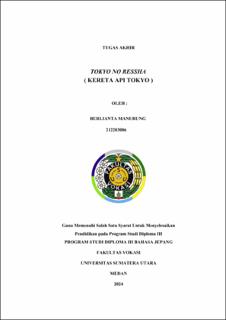| dc.description.abstract | Japan, a developed country in Asia, is famous for its sophisticated transportation system that is safe and orderly, with minimal traffic jams. Trains, such as the Shinkansen, dominate transportation in Japan, including in densely populated Tokyo. This research analyzes the history, development and management of the Tokyo railway system using literature study methods from various sources such as books, journals, government reports and academic articles. The success of this system lies in careful planning, advanced technology and efficient management, providing timely, safe and convenient services, and reducing congestion and environmental impact. The culture of order and discipline in Japanese society also supports the operational efficiency of trains, with the prohibition of loud talking, eating/drinking, or smoking on trains. Continued investment in infrastructure and technology is necessary for the inclusive growth of Tokyo's railway system. | en_US |


